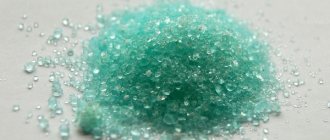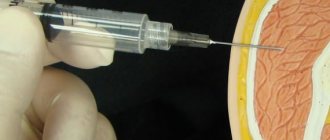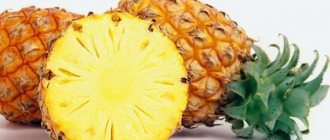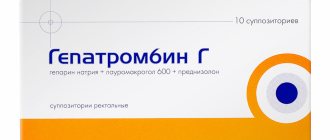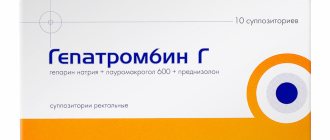published: 18. 12 . 2019
author: Vitaly Shibarshin
From this article you will learn:
- What is the enzyme lysozyme
- How and by whom the enzyme lysozyme was discovered
- What is the mechanism of action of the enzyme lysozyme
- What are the benefits of drugs with the enzyme lysozyme for animals?
- How to properly use lysozyme enzyme for cows
- What recommendations should be followed for using the drug with lysozyme in livestock farming?
Among the protein catalysts that play a critical role in the formation of immunity, it is necessary to highlight the enzyme lysozyme. In the body, it can be found in the mucous membrane of the oral cavity, respiratory tract, conjunctiva of the eyes, that is, in those organs and tissues that are constantly exposed to microorganisms.
The enzyme lysozyme is found in saliva, as well as in pleural fluid, duodenal juice and blood plasma. The lysozyme preparation was isolated in pure form from the secretion of the parotid salivary gland, and its properties and composition were studied at the same time. We will tell you more about what the enzyme lysozyme is and what are the ways of using it in animal husbandry in our article.
What is the enzyme lysozyme
Lysozymes are low molecular weight proteins widely distributed in the animal kingdom. They take part in the formation of a nonspecific immune response. The enzyme lysozyme performs functions that differ in different organisms. In any case, it is very important and irreplaceable.
Lysozyme can withstand boiling for up to three minutes, is not digested by trypsin, is not afraid of an acidic environment, but is unstable in an alkaline environment. The enzyme is active over a fairly wide pH range, but is quickly inactivated under the influence of UV irradiation.
Lysozyme is a mucopolysaccharidase enzyme. It is found in many tissues, organs and biological fluids in representatives of all four kingdoms of living nature, including humans. Lysozyme is an enzyme that cleaves p-1,4 bonds between N-acetylmuramic acid and 2-acetamido-2-deoxy-2-glucose residues in mucopolysaccharides or mucopeptides. It has a three-dimensional structure, which scientists were able to fully decipher.
There is also an active center in the lysozyme molecule. The natural substrate of this enzyme is considered to be the cell membranes of bacteria. The most sensitive to it is Micrococeus Iysodeikticus, used to determine the degree of activity of the lysozyme enzyme.
The best study was made of egg white lysozyme. It was isolated in the form of crystals and began to be used as a medicine. Molecular weight – 14,000, isoelectric point – 10.5–11.0. The enzyme lysozyme is not cleaved by trypsin, but is digested by pepsin. It is most active at pH 5–7, ionic strength 0.1 and in an acidic environment. However, under alkaline conditions, lysozyme quickly loses its activity. The optimal temperature for the enzyme to work is +60 °C; above these values it becomes inactive. When dried, it can withstand sterilization at +160 °C for two hours.
Lysozyme
Stylab / Catalog / Allergens / Lysozyme
STYLAB offers test systems for the analysis of lysozyme in wine, cheese and sausages using enzyme immunoassay.
Enzyme-linked immunosorbent assay (ELISA), strip plate
|
Lysozyme is an enzyme that can destroy bacterial walls. Such enzymes are found in saliva, mucus of the nasopharynx and gastrointestinal tract, tears, blood plasma, breast milk and urine of many animals, including humans, as well as in chicken eggs and the eggs of other birds. Lysozyme is part of the immune system and provides protection to the body. There are many variants of this enzyme, including mutant forms. Chicken egg lysozyme is also called Gal d 4 protein.
Lysozyme destroys the walls of gram-positive bacteria, including fermented milk bacteria. However, it does not affect the growth of gram-negative bacteria and yeast.
In the food industry, lysozyme is used as a preservative; it is registered as food additive E1105. It is also used in scientific research and for the production of medicines. Products containing lysozyme may cause an allergic reaction in people sensitive to this protein. These include all products that contain egg white, egg or egg powder, as well as lysozyme itself. In addition to baked goods, bread, confectionery, sausages and sauces, these include hard and semi-hard cheeses, as well as clarified wines. Lysozyme is added to them to stop the development of microorganisms.
It is assumed that lysozyme causes at least 15-35% of all allergic reactions to chicken eggs. This is a less strong allergen than ovalbumin and ovomucoid, but it is very often found in food. Like allergies to other egg proteins, allergies to lysozyme usually appear in early childhood and resolve by school age.
Like other egg processing products, lysozyme is one of the components, the presence of which, according to TR CU 022/2011, must be indicated in the composition of the product if it is not possible to guarantee their absence. Similar legal requirements apply in the European Union. To determine lysozyme in food products, especially in wine and cheese, it is convenient to use ELISA test systems. This highly sensitive method is accurate, does not require significant equipment costs and allows you to quickly obtain results.
Literature
- Infante S, López-Matas MÁ, Carnés J, Fuentes V, Alonso E, Zapatero L. Allergy reaction mediated by Gal d 4 (lysozyme) after the induction of tolerance with egg. Ann Allergy Asthma Immunol. 2014 Oct;113(4):491-2.
- Carstens C, Deckwart M, Webber-Witt M, Schäfer V, Eichhorn L, Brockow K, Fischer M, Christmann M, Paschke-Kratzin A. Evaluation of the effectiveness of enological procedures on lysozyme depletion in wine by an indirect ELISA method. J Agric Food Chem. 2014 Jul 2;62(26):6247-53.
- Hoffman DR. Immunochemical identification of the allergens in egg white. J Allergy Clin Immunol. 1983 May;71(5):481-6.
←Return
How, by whom and when was the enzyme lysozyme discovered?
Lysozyme is the first lytic enzyme that destroys bacterial walls to become known to science. It was discovered in 1922 by Alexander Fleming. This British microbiologist discovered the enzyme lysozyme in many organs, tissues, fluids and secretions of animals. He also suggested that this substance effectively protects macroorganisms from the effects of bacteria.
An interesting fact is that this discovery was made by Fleming almost ten years earlier than his most famous scientific achievement - the discovery and deciphering of the penicillin structure (together with H. W. Flory and E. B. Cheyne). The first reports that bacteria can synthesize bacteriolytic enzymes appeared in the 50s of the 20th century. This ability has now been found in all known bacteria.
So, the enzyme lysozyme was obtained in its pure form by Alexander Fleming in 1922.
Since 1965, scientists began to study its effect on the productivity of farm animals.
Since 1975, the USSR began to use crystalline egg and then microbiological lysozyme GZH in animal husbandry.
Advantages of purchasing lysozyme from Miltex LLC
- We guarantee you the quality of the products we offer, because we fully trust them and are the official representative in Belarus. This manufacturer of components for the food industry has several development centers in different countries and is widely known throughout the world.
- You can purchase lysozyme from us both in a liquid aggregate state of the “LYSOZYME FLUID AFILACT” brand, and in the form of a dry powder of the “AFILACT INSTANT” brand, which allows you to choose the most suitable option in each specific case.
- If necessary, you can always get recommendations from our specialists on the use of certain components in the production of your products.
You can find out more detailed information about lysozyme upon additional request from our expert - head of the technology department - Dmitry Nikolaevich Vaylapov by phone +375447105781 or email [email protected] by.
Lysozyme enzyme: mechanism of action
The therapeutic effect of lysozyme is based on its antimicrobial action, which depends on the enzymatic activity of this protein. The enzyme partially or completely breaks down the cell membranes of those microbes in which they consist of chitins, mucopeptides and glucosamine peptides. Among gram-negative and gram-positive microorganisms, the latter are more sensitive to lysozyme.
The difference in impact is explained by the fact that the chemical composition of the membranes of these groups of bacteria is different. The enzyme lysozyme mainly affects saprophytes, although there are a number of pathogenic strains (bacillus, vibrio, cocci) that it also affects. Treatment of a bacterial cell with this enzyme leads to the formation of a large number of holes in the cell membranes, and disorganization of the structural components is observed inside.
In the tissues of the macroorganism, the enzyme lysozyme stimulates the production of interferon, thereby slowing down the reproduction of viral particles. In addition, it activates a number of bacterial toxins.
An increase in the antimicrobial effect of the lysozyme enzyme is observed when it is combined with antibacterial drugs, especially streptomycin. Therefore, complex medicines containing both of these components were created (for example, lysozyme + methicillin has a strong effect on Staphylococcus aureus).
Also, the enzyme lysozyme has an analgesic effect and stimulates the regeneration of cells and tissues.
Medicines containing the enzyme lysozyme are effective when used locally and intramuscularly.
In the secretion of the parotid salivary gland, lysozyme is contained in a concentration of 0.5 mg/100 ml. There is much more enzyme in mixed saliva than in blood plasma and other tissues.
The role of the enzyme lysozyme in the body is not only its antibacterial effect. It also takes part in regenerative processes, the development of immunity, and the healing of damage to the oral mucosa.
So, to summarize, we can say that lysozyme belongs to the group of enzymes with bacteriolytic action. In simpler terms, it can dissolve some bacteria. This enzyme can be detected in those places of the body that most often come into contact with the environment. These areas include the gastrointestinal mucosa, breast milk, salivary gland secretions, tear fluid, and so on. The largest amount of this enzyme is found in saliva.
Quantitative determination in the blood of specific immunoglobulins of class E to one of the chicken protein allergens - lysozyme.
Synonyms Russian
Specific immunoglobulins of class E to chicken protein lysozyme.
English synonyms
ImmunoCAP k208 (Egg, Lysozyme, nGal d 4), IgE; Egg, Lysozyme (nGal d 4), IgE Abin Serum; Lysozyme, nGald4, IgE.
Research method
Solid phase immunofluorescence (ImmunoCAP).
Units
kUA/l (kilounit of allergen per liter).
What biomaterial can be used for research?
Venous or capillary blood.
How to properly prepare for research?
- Do not smoke for 30 minutes before the test.
General information about the study
An allergen is a substance that causes an allergic reaction. In atopic diseases, allergens stimulate the formation of IgE class antibodies and are causative factors in the development of clinical symptoms of allergic diseases. The detection of specific immunoglobulins E in the blood for a specific allergen confirms its role in the development of type I allergic reaction (reaginic), and therefore allows us to determine the possible “culprit” of the allergy and prescribe appropriate therapeutic and preventive measures. It must be taken into account that the composition of an allergenic substance often includes not one, but several protein structures with different biochemical and allergenic properties, which can influence the course of the atopic disease.
Food allergy is a reaction caused by food intake, which is based on immune mechanisms. It can often be confused with food intolerance associated with other reasons (features of food preparation, product composition, metabolic disorders, gastrointestinal diseases).
Food allergies are more often observed in children in the first years of life, mainly up to the age of three. About 90% of all allergic reactions to food are associated with the consumption of milk, chicken eggs, fish and seafood, soy, wheat, peanuts and tree nuts. Chicken eggs, especially egg whites, can cause allergic reactions such as urticaria, angioedema, gastrointestinal disorders, eosinophilic esophagitis, exacerbations of atopic dermatitis, rhinoconjunctivitis and asthma. Specific IgE antibodies to chicken eggs are detected in 66% of children with atopic dermatitis and damage to the respiratory system. It must be remembered that eggs can be part of various food products, such as pasta, sausages, bakery and confectionery products, and act as “hidden” allergens, and traces of chicken proteins are detected in some vaccines made from chicken embryos.
The white and yolk of a chicken egg differ in composition and allergenic properties. Thus, the white consists of proteins (10%) and water (88%), and the yolk contains water (50%), fats (34%) and proteins (16%). Egg white contains the main allergens of chicken eggs: ovalbumin (44% of all protein proteins), ovomucoid (11%), ovotransferrin (12%), ovomucin (3.5%) and lysozyme (3.4%). Despite the prevailing concentration of ovalbumin, ovotransferrin and ovomucoid are considered more allergenic. The pronounced allergenic properties of ovomucoid are associated with the protein’s resistance to heat treatment, the effects of digestive tract enzymes, and the peculiarities and differences between the digestive processes in children and adults. The main allergenic molecules of chicken protein are the glycoproteins Gal d1, Gal d2, Gal d3 and Gal d4.
The Gal d4 allergen is a lysozyme protein with a molecular weight of 14.5 kDa. Lysozyme is a globular peptide distributed in various tissues and organs of animals. It has antibacterial properties and is present in serum, saliva and other secretions, and its structure differs among different species of living organisms. Lysozyme is used in the food industry as a food additive E1105, a biological catalyst in the production of hard cheeses, as a preservative in the pharmaceutical industry, it is also included in medications for the treatment of respiratory diseases and is used as a local antiseptic. Mainly, lysozyme is obtained using biotechnology from chicken egg whites.
At first, insufficient attention was given to lysozyme as an allergen due to its instability to heat treatment, but the identification of specific IgE antibodies to this protein turned out to be common among people who regularly work with chicken egg material. For example, it was noticed that pharmaceutical production workers under the influence of lysozyme develop bronchial asthma and rhinitis, and allergic reactions are also observed when the skin comes into contact with this allergen. In some children and adults sensitized to chicken protein, reagin antibodies to lysozyme are detected with clinical symptoms of food allergy. Inhalation intake of lysozyme as an aeroallergen is a serious problem for bakers and confectioners, in whom the development of occupational bronchial asthma can be associated not only with wheat, rye or barley flour allergens, but also with various chicken egg proteins.
People who are sensitized to chicken protein lysozyme need to pay attention to the composition and avoid consuming foods and medications that may contain this allergenic protein.
The purpose of this study is to determine specific IgE to the native (obtained from natural raw materials) chicken protein allergen - lysozyme (nGal d4) using the ImmunoCAP method. Allergy diagnostics with ImmunoCAP technology is characterized by high accuracy and specificity, which is achieved by detecting even very low concentrations of IgE antibodies in a small amount of blood. The study is based on immunofluorescence, which makes it possible to increase sensitivity several times compared to other diagnostic methods. WHO and the World Allergy Organization recognize ImmunoCAP diagnosis as the “gold standard”, as it has proven its accuracy and consistency in independent studies.
What is the research used for?
- Diagnosis of allergies to various components of chicken protein;
- diagnosis of the causes of allergic diseases and their exacerbations in children and adults;
- Diagnosis of the causes of occupational allergies in workers in the pharmaceutical and food industries.
When is the study scheduled?
- If you suspect sensitization to chicken eggs;
- when examining children and adults with atopic dermatitis, urticaria, angioedema, bronchial asthma, allergic rhinitis/conjunctivitis, gastrointestinal disorders, anaphylactic shock and other manifestations of allergic diseases, probably caused by consumption of or contact with chicken protein;
- when examining food and pharmaceutical industry workers with bronchial asthma, allergic rhinitis, allergic dermatitis and food allergies.
What do the results mean?
Reference values: 0 - 0.35 kU/l.
Reasons for the increased result:
- sensitization to one of the chicken protein allergens - lysozyme.
Reasons for negative results:
- lack of sensitization to this allergen;
- long-term restriction or exclusion of contact with the allergen.
The benefits of preparations with the enzyme lysozyme for animals
The amount of the enzyme lysozyme in the body of highly productive farm animals is lower than that of ordinary animals, and therefore their immune defense is weakened. A normal or slightly increased level of this enzyme in the blood has a beneficial effect on the resistance of animals to pathogenic microorganisms.
To eliminate the deficiency of the lysozyme enzyme, preparations containing a multienzyme complex of lysozymes were created. These products also contain components that destroy the walls of gram-negative bacterial cells. Such drugs can successfully combat pathogens of enteritis, eczema, mastitis and other infections.
Basics of Lysozyme Enzyme for Cows
To prepare the body of cows for lactation, a preparation of the enzyme lysozyme is introduced into the diet of animals in the final phase of the dry period. In this way, infectious diseases of the udder are prevented and cellular regeneration is improved.
A high concentration of the enzyme lysozyme in the mucous membranes reduces the incidence of endometritis in animals and shortens their recovery period after calving.
As a result of the introduction of lysozyme enzyme preparations into cows' food, colostrum becomes of better quality. This leads to an increase in the viability of calves and a decrease in their morbidity. The high concentration of the enzyme in cow saliva is a protective barrier that is of great importance when the mother licks the calf.
Under the influence of lysozyme, calf skin acquires bacteriolytic properties, which means its vitality increases. When the enzyme lysozyme is added to the feed, its concentration in the blood of calves increases to 35–40 mcg/ml, due to which the immune system is activated and weight gain increases. As a result of increasing the amount of lysozyme in the body, high bactericidal activity of the entire organism is ensured.
The most important source of the enzyme is cow colostrum; it contains lysozyme in a concentration of 13-14 mcg/ml. There is much less of it in milk, only 0.5–2.0 μg/ml. It was found that the activity of the lysozyme enzyme in the blood of newborn calves increases almost threefold on days 2–10. During this period it reaches 15–17 mcg/ml. If the calf has any pathology, then the enzyme activity increases only 1.5-2 times.
As a result of a series of studies aimed at studying the immunological nonspecific resistance of newborn calves, scientists found that animals that died from acute gastrointestinal diseases had a low level of the enzyme lysozyme in the blood plasma.
All these properties of the enzyme lysozyme, the price of which on the market usually depends on its quality, allow it to be used as an independent medicine and as a component of complex preparations (together with antibiotics). It is used for the prevention and treatment of diseases that are difficult to treat. The main advantage of such products is that bacteria practically do not adapt to them. When cows consume lysozyme, milk does not lose its quality and is suitable for human nutrition.
Practical recommendations for the use of the enzyme lysozyme in animal husbandry
The enzyme lysozyme is used:
- For dry cows.
It is used to prepare the cow’s body for calving, to reduce the risk of complications after childbirth, and also to prevent mastitis.
Method : the enzyme lysozyme is given 1-2 weeks before calving, 100 g per day. This amount of the drug should be divided in half and given in the morning and evening.
- For dairy cows.
Used to treat and prevent mastitis, improve the quality of milk and reduce the content of somatic cells in it.
Method : lysozyme enzyme is given for 1-2 weeks, 50 g twice a day (morning and evening).
- For calves.
Used to enhance the newborn's immunity, reduce the incidence of diarrhea and increase weight gain.
Method : lysozyme enzyme is given to calves along with colostrum, milk or milk replacer (if prepared) 50–100 g per 20 liters of liquid.
So, in order to prepare the cow’s body for lactation, the enzyme lysozyme is given to her exactly 1-2 weeks before calving. An increase in its amount in the mucous membranes reduces the risk of developing endometritis and shortens the postpartum recovery period. Adding lysozyme to feed promotes the production of high-quality milk, which reduces the incidence of disease in calves and increases their vitality.
The most important property of the lysozyme enzyme is its ability to reduce the number of somatic cells in cow's milk, prevent the development of mastitis and treat them. According to the results of many studies, at the end of a week of using this enzyme, about 80% of animals recovered, and clinical improvements were noted in 100% of cows, which was manifested by an increase in the quantity of milk and an increase in its quality.
These results are explained by the fact that the main reason for the development of inflammation of the mammary glands in cows is their infection with pathogenic bacteria: gram-negative (S.uberis, E.coli, Klebsiella) and gram-positive (S.aureus and S.agalactiae). These types of microorganisms cause 90% of all mastitis. Bacteria are destroyed by the action of the enzyme lysozyme when its content in milk is from 2.5 to 16 μg/ml. Only the natural concentration of the enzyme in the secretion of the mammary glands barely reaches 0.5–2 μg/ml. That is why, in order to increase it, lysozyme is given to cows along with feed.
On the third day of feeding cows feed with lysozyme, the enzyme content in milk increases to 30 μg/ml. This concentration leads to the destruction of bacterial cells and regeneration of affected tissues.
As mentioned above, when lysozyme was added to the feed of calves, their immunity improved, there was a decrease in the number of cases of diarrhea and an improvement in appetite.
As a result, you need to buy the enzyme lysozyme and use it for farm animals as follows:
- a drug that stimulates the body's immune system;
- a product that improves the nonspecific resistance of calves to infections;
- stimulator of cellular regeneration and hematopoietic processes;
- anti-inflammatory, bactericidal and wound-healing drug;
- antitoxic agent.


